Laser vs. Cover-Ups: What’s Worth It?
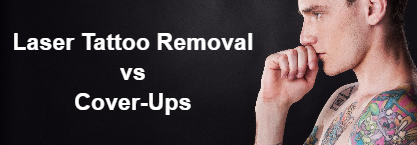
The Science Behind Laser Tattoo Removal
TheraMediCare.com – Tattoos are a popular form of self-expression. However, as life evolves, so do our preferences and decisions.
This is where laser tattoo removal comes into play. It’s a procedure that allows individuals to erase their past choices, offering a fresh start.
Understanding the laser tattoo removal process is crucial for healthcare providers. It’s not just about removing an unwanted tattoo. It’s about understanding the science, the technology, and the impact on a patient’s life.
This article aims to provide a comprehensive guide on the subject. We’ll delve into the intricacies of the procedure, the role of a laser tattoo removal technician, and the cost considerations.
We’ll also touch on the sustainability aspect of the process. How does it compare to other methods like tattoo cover-ups?
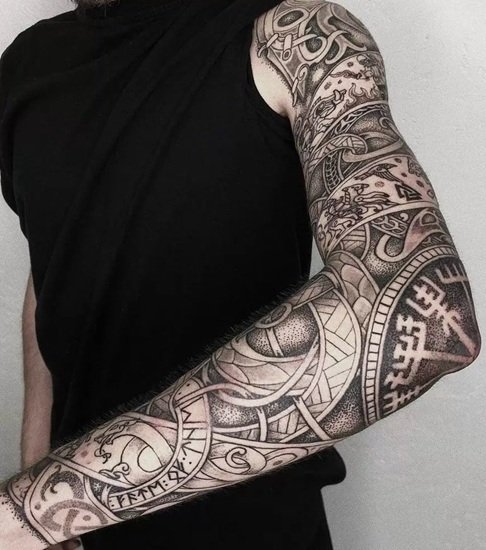
The Science Behind Laser Tattoo Removal
Laser tattoo removal relies on advanced technology. It uses specific wavelengths of light to target tattoo ink. This light is absorbed by the ink, causing it to break into tiny particles.
These tiny ink particles are then eliminated by the body’s natural processes. The immune system flushes them out, gradually fading the tattoo.
Different colors of ink absorb different wavelengths of light. This requires the use of various lasers for multicolored tattoos.
The precision of lasers ensures the surrounding skin remains mostly unharmed. This makes laser tattoo removal safer than other methods.
However, achieving complete removal depends on several factors. The type of ink and the depth of the tattoo play significant roles.
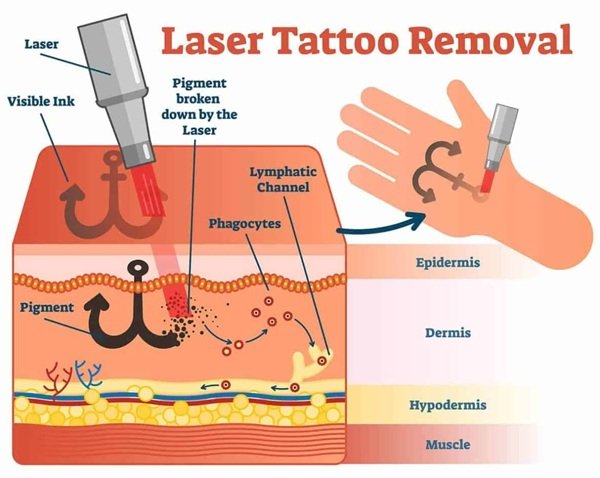
Types of Lasers Used in Tattoo Removal
Tattoo removal uses various lasers. Each type is suited for different ink colors and skin types.
One common type is the Q-switched laser. It’s effective for breaking down dark ink colors such as black and blue.
Another is the picosecond laser. It’s known for targeting stubborn colors like green and purple.
Here’s a brief overview of the types:
- Q-switched lasers: Ideal for dark inks.
- Picosecond lasers: Effective for bright colors.
- Alexandrite lasers: Suitable for black and blue ink.
Choosing the right laser is crucial for effective tattoo removal. It ensures the ink absorbs maximum energy for breakdown.
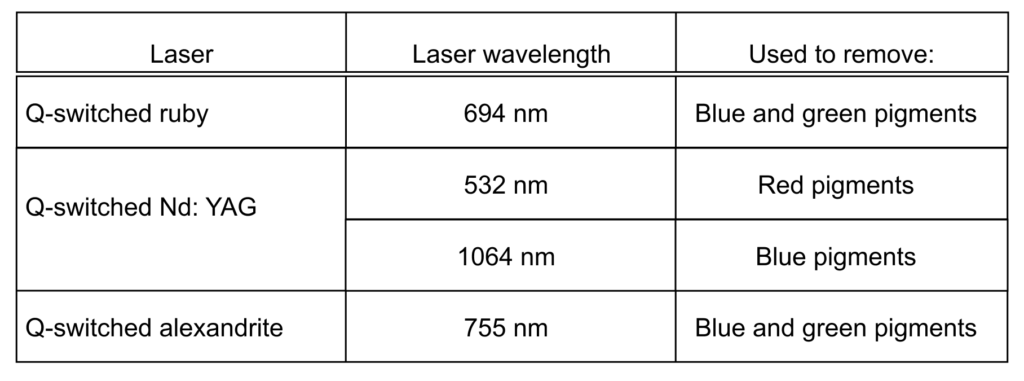
Factors Influencing Tattoo Removal Success
Successful tattoo removal involves several factors. These factors determine the number of sessions required and the final results.
Firstly, ink color plays a vital role. Dark inks are easier to remove, while bright colors take more time.
The age of the tattoo also matters. Older tattoos tend to fade faster as they have already started breaking down.
Furthermore, the skin type of the individual is crucial. Different skin types respond differently to laser treatment.
Consider these key factors:
- Ink color: Black fades fastest, while green is tougher.
- Tattoo age: Older tattoos require fewer sessions.
- Skin type: Different responses to laser treatments.
Understanding these factors can help in setting realistic expectations for patients. It emphasizes the importance of a personalized approach in tattoo removal.
The Role of a Laser Tattoo Removal Technician
Laser tattoo removal requires skilled technicians. Their expertise ensures safe and effective treatment outcomes. They play a crucial role in patient satisfaction.
Technicians are responsible for evaluating tattoos and selecting the appropriate laser type. Their experience helps tailor treatments to individual needs.
They also guide patients throughout the process. From consultation to aftercare, technicians provide support and information.
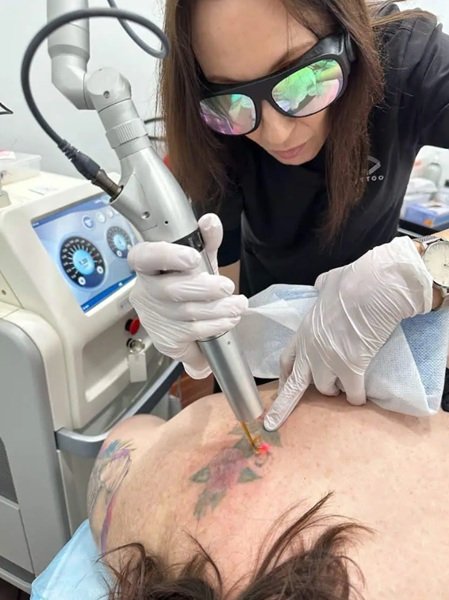
Becoming a Laser Tattoo Removal Technician
Becoming a competent laser tattoo removal technician requires dedication. Knowledge of laser technology and skin is essential.
Understanding skin types and how they react to lasers is crucial. A thorough grasp of laser equipment ensures safety and efficiency.
Here’s how to start on the path:
- Research: Learn about laser technologies and the tattoo removal process.
- Training: Enroll in accredited courses that cover both theory and practical skills.
- Certification: Obtain necessary certifications to validate your expertise.
- Experience: Gain practical experience under the supervision of seasoned technicians.
These steps help build a solid foundation for a successful career. They ensure technicians can deliver top-notch service and care.
Training and Certification Requirements
Training is fundamental for laser tattoo removal technicians. It involves both theoretical knowledge and hands-on practice. This ensures competency and confidence in procedures.
Certification programs provide accreditation. They often cover laser physics, skin biology, and safety protocols. Theoretical study is combined with practical sessions.
Generally, certification requirements include:
- Completion of accredited courses: Ensure comprehensive coverage of topics.
- Practical experience hours: Gain real-life experience under supervision.
- Examinations: Demonstrate knowledge and skill proficiency.
Meeting these requirements is crucial for professional credibility. It reassures patients of safe and effective service.
Safety and Protocols During Removal
Safety is paramount in laser tattoo removal. Technicians adhere to strict protocols to minimize risks and maximize results.
Protective eyewear is mandatory for both patient and technician. It guards against potential laser exposure to the eyes.
Additionally, maintaining sterile equipment and clean environments prevent infections. Technicians follow hygiene standards rigorously.
Consent forms and thorough consultations are crucial. They ensure patients understand the process and risks involved. This transparency builds trust and sets clear expectations.
The Laser Tattoo Removal Procedure
Laser tattoo removal is a precise and targeted process. It relies on advanced technology to break down tattoo ink safely.
The procedure involves directing laser beams at the tattoo. The laser’s energy targets ink particles in the skin’s dermis.
Once targeted, the ink particles break down into smaller pieces. The body’s immune system gradually absorbs these fragments.
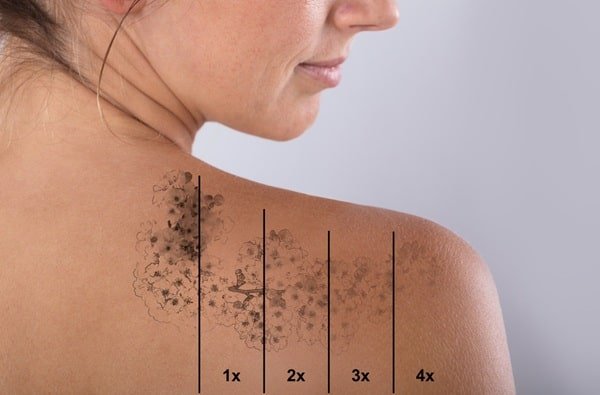
The duration of each session varies. Factors include tattoo size, ink color, and skin type. Multiple sessions are often necessary for complete removal.
It is crucial to communicate openly with your technician. Understanding the process helps set realistic expectations.
Before the Procedure: Consultation and Preparation
Before undergoing laser tattoo removal, a consultation is necessary. This step helps assess the tattoo’s characteristics.
The technician evaluates skin type, tattoo color, and age. This helps determine the best laser type and treatment plan.
Preparation also involves discussing the patient’s medical history. Disclosure of any skin conditions or medications is vital.
Patients should also receive aftercare instructions. Proper preparation ensures smooth sessions and reduces potential risks.
During the Procedure: What to Expect
During the laser tattoo removal session, comfort and safety are priorities. The technician may apply a topical anesthetic. This minimizes discomfort, making the experience more tolerable.
Protective eyewear is mandatory. Both technician and patient wear it to shield eyes from laser light.
As the laser targets the tattoo, a sensation may be felt. It often resembles a rubber band snapping against the skin.

The duration of a session can range from a few minutes to over an hour. This depends on the tattoo’s size and complexity.
Communication with the technician during the procedure ensures comfort. Adjustments can be made for an optimal experience.
After the Procedure: Healing and Aftercare
Post-procedure care is crucial for a speedy recovery. Proper aftercare minimizes potential side effects and promotes healing.
Initially, the treated area may appear red and swollen. These are common and usually subside within a few days.
Following these aftercare recommendations is essential:
- Apply a cold compress: Reduces swelling and soothes skin.
- Keep the area clean: Prevents infection and promotes healing.
- Avoid sun exposure: Protects sensitive skin from UV damage.
- Follow any specific instructions provided: Customized guidance for individual cases.
Patients should also monitor the treated area. Any unusual reactions should be reported to the technician promptly.
Adhering to aftercare instructions ensures optimal results. It supports the body’s natural healing process, leading to successful tattoo removal.
Risks and Side Effects of Laser Tattoo Removal
Laser tattoo removal, while generally safe, does carry potential risks. Understanding these risks helps in making informed decisions.
Common side effects include redness, swelling, and minor pain. These symptoms are temporary, resolving in days or weeks.
In rare cases, more serious complications can occur. These include blistering, scarring, or changes in skin pigmentation.
The likelihood of these issues can depend on skin type and tattoo characteristics. Darker skin tones may face a higher risk of pigmentation changes.
Minimizing risks involves choosing a qualified technician. An experienced professional ensures proper laser settings for safe treatment.
Following aftercare advice is equally critical. It reduces chances of infection or adverse reactions post-procedure.
Through careful evaluation and proper care, adverse effects can be minimized. This leads to a smoother recovery and more satisfactory results.
Patients should openly discuss concerns with their technician. This communication fosters understanding and confidence in the removal process.
Cost Considerations and Comparisons
The cost of laser tattoo removal can vary widely. Factors such as tattoo size, color, and location all affect the price.
Each session ranges from $200 to $500, depending on complexity. Multiple sessions are typically needed for complete removal, adding to the cost.
Insurance often does not cover tattoo removal, as it’s considered cosmetic. Financial planning or exploring available financing options may be necessary.
Geographical location also influences cost. Urban areas might charge more due to higher operational costs.
Prices can fluctuate based on technician expertise and equipment quality. Opting for established providers may entail a higher fee, reflecting their proficiency.
Despite the expense, many find the investment worthwhile. Removal can promote personal confidence and professional opportunities, justifying the financial commitment.
Carefully weighing these considerations ensures informed decisions. It helps in budgeting appropriately for the tattoo removal journey.
Laser Tattoo Removal vs. Tattoo Cover-Ups
Comparing laser removal with tattoo cover-ups reveals notable differences. Both options have distinct advantages and cost implications.
Laser removal targets complete ink eradication, often requiring numerous sessions. This process appeals to those seeking total removal.
Alternatively, cover-ups transform existing tattoos with new designs. This method usually costs less than multiple laser sessions.
Cover-ups typically involve a one-time fee. The cost varies based on the artist’s skill level and the complexity of the new design.
- Laser removal benefits those wanting a clean slate.
- Cover-ups suit individuals open to redesign but content to retain some ink.
- Budget considerations and desired outcomes guide the choice.
Each approach offers unique benefits. The decision hinges on personal goals, financial constraints, and tolerance for procedure duration.
Ultimately, selecting between removal and cover-ups should align with the individual’s preferences and circumstances.
Sustainability and Environmental Impact
Laser tattoo removal not only benefits individuals but the environment as well. It contributes to sustainability by encouraging the reduction of unwanted ink, minimizing future waste.
Traditional tattoo removal processes can generate significant waste. Laser procedures, however, focus on precision, reducing the need for excessive materials.
Moreover, the equipment used is increasingly designed with sustainability in mind. Technological advancements allow for energy-efficient lasers, reducing the carbon footprint associated with their use.
Reputable clinics often prioritize eco-friendly practices. This includes proper disposal of used materials and adherence to environmental regulations.
By choosing providers committed to sustainability, patients support broader ecological goals. This helps in reducing the environmental impact of personal beauty choices.
Understanding these aspects highlights the role of laser removal in promoting greener medical practices. It aligns with the increasing global push towards environmental responsibility.
Reducing Medical Waste in Tattoo Removal
Medical waste is a growing environmental concern. In tattoo removal, minimizing this waste is crucial.
Laser tattoo removal naturally generates less waste compared to chemical methods. With fewer by-products, its ecological footprint is reduced significantly.
Clinics play a vital role in waste management. Implementing robust protocols ensures that disposables, such as used gauze and gloves, are handled sustainably.
Some practices incorporate recycling programs for used materials. This helps in offsetting the waste produced during procedures.
Education on proper waste disposal is essential for technicians. It promotes awareness and ensures adherence to best practices.
Patients can contribute by selecting environmentally conscious providers. This choice encourages clinics to maintain or adopt greener practices.
Ultimately, reducing medical waste is a collaborative effort. It necessitates both industry innovation and consumer responsibility.
Conclusion: The Importance of Quality and Care in Tattoo Removal
In the ever-evolving field of aesthetics, quality and care are paramount. Laser tattoo removal is no exception, requiring a meticulous approach for optimal outcomes.
Choosing a reputable provider ensures high standards. Experienced technicians are committed to safety, precision, and patient satisfaction.
The decision to remove a tattoo is personal and significant. Providers must offer empathetic support and clear communication throughout the process.
Patients benefit from transparency regarding potential outcomes. Understanding the limitations and opportunities of laser removal guides realistic expectations.
Moreover, ongoing advancements enhance the procedure’s effectiveness. Staying informed about the latest technologies ensures that technicians deliver superior results.
Ultimately, laser tattoo removal is more than a cosmetic service. It is a journey towards enhanced personal expression and well-being. Prioritizing quality and care makes all the difference in this transformative process.
